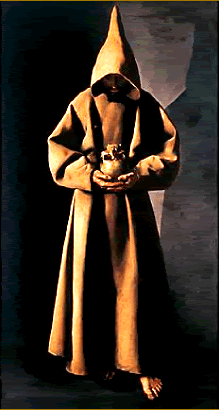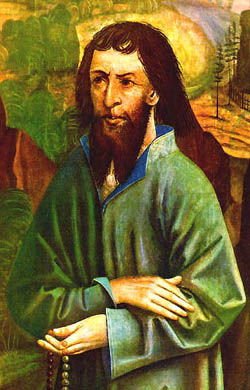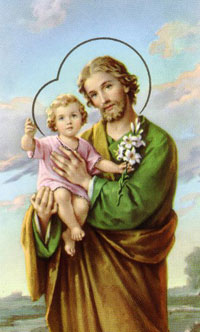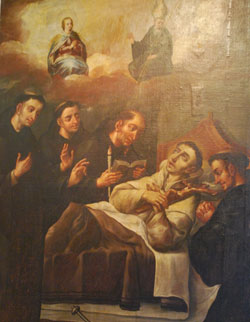She is the virgin-mother who fulfills Isaiah 7:14 in a way that Isaiah could not have imagined. She is united with her son in carrying out the will of God (Psalm 40:8-9; Hebrews 10:7-9; Luke 1:38).
Together with Jesus, the privileged and graced Mary is the link between heaven and earth. She is the human being who best, after Jesus, exemplifies the possibilities of human existence. She received into her lowliness the infinite love of God. She shows how an ordinary human being can reflect God in the ordinary circumstances of life. She exemplifies what the Church and every member of the Church is meant to become. She is the ultimate product of the creative and redemptive power of God. She manifests what the Incarnation is meant to accomplish for all of us.
Comment:
Sometimes spiritual writers are accused of putting Mary on a pedestal and thereby discouraging ordinary humans from imitating her. Perhaps such an observation is misguided. God did put Mary on a pedestal and has put all human beings on a pedestal. We have scarcely begun to realize the magnificence of divine grace, the wonder of God’s freely given love. The marvel of Mary—even in the midst of her very ordinary life—is God’s shout to us to wake up to the marvelous creatures that we all are by divine design.
Quote:
“Enriched from the first instant of her conception with the splendor of an entirely unique holiness, the virgin of Nazareth is hailed by the heralding angel, by divine command, as ‘full of grace’ (cf. Luke 1:28). To the heavenly messenger she replies: ‘Behold the handmaid of the Lord; be it done to me according to thy word’ (Luke 1:38). Thus the daughter of Adam, Mary, consenting to the word of God, became the Mother of Jesus. Committing herself wholeheartedly and impeded by no sin to God’s saving will, she devoted herself totally, as a handmaid of the Lord, to the person and work of her Son, under and with him, serving the mystery of redemption, by the grace of Almighty God” (Vatican II, Dogmatic Constitution on the Church, 56).




 RSS Feed
RSS Feed
